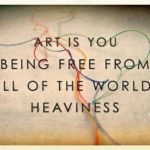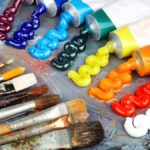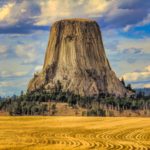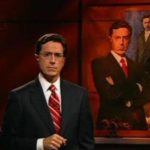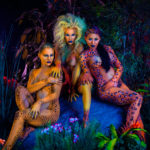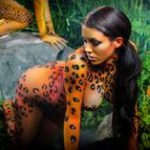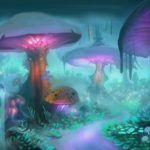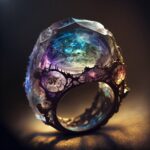This is our introduction to a variety of subsets of art.
–
Table of Contents:
- Introduction
- Vocabulary
- Drawing Becomes
- Painting Becomes
- Ceramics Becomes
- Photography
- Progression
- Additional Notes
- Example Images
–
Introduction:
While “The Arts” includes subsets such as dance (which, with public speaking, can lead into theater), this class focuses on drawing (which can lead into fields such as architecture, painting, and video-game designing) and ceramics (which can lead into sculpting and scale-modeling).
The basics are taught in this class, while the advanced content is at the Lion Art Academy (LAA) (which is sometimes considered to be an annex or trade-school extension of the LHS campus).
–
Vocabulary:
- abstract
- aesthetic
- complementary colors
- composition
- Computer-Generated Image (CGI)
- conceptual art
- contrast
- drawing
- expressionism
- fine arts
- form
- illustration
- line
- painting
- pentimento
- perspective
- pointillism
- primary colors
- sculpture
- secondary colors
- shade; making things darker (vs. tint; making things brighter/lighter)
- shape
- sketching
- space (vs. negative space)
- tertiary colors
- texture
- value
- visual art
more TBA…
–
Drawing Becomes:
- sketching
- drawing
- drafting
- storyboards
- comic books
- graphic novels
- architectural design; blueprints and schematics
- (other) technical drawings (such as for product manuals)
- computer-aided design
- sand-art
–
Painting Becomes:
- water-colors
- brush-strokes for Chinese writing
- oil on canvas
- easel-based
- body-painting
- stained-glass
Body-painting of self and others is taught since the elementary level.
The Governor has always sensed/found that body-painting can be done in attractive ways, while applying makeup (such as lipstick, blush, and mascara) cannot.
–
Ceramics Becomes:
- pottery / tableware
- plaques
- ceramic surfaces/panels
- ceramic armor
- figurines
- life-size statues
- larger-than-life statues (such as the G.A.H. supports, and the Harmonics ‘Mechs)
- 3D-printing with clay
–
Photography:
This technology/field is also touched on in this class. It is covered in greater detail in the para-military course.
–
Progression:
(added in 2024 April)
The following is a general idea; different students can focus on different parts of the following based on their intended development/mastery (such as not learning about photography, if they aren’t into that).
- inspecting your art tools
- quality types of art tools
- cleaning/maintaining your art tools
- storing your art tools
- preparing your space/s for creating art, and cleaning up once you are finished making art for the day
- practice drawing different thicknesses/types of lines with different tools; different types of pencils, then pens, then markers, then paintbrushes, etc.
- practice shading in different ways
- practice drawing different inanimate objects
- practice drawing different live models; actual people
- practice drawing temporary/erasable grids/guidelines to help make perspective look ‘right’
- practice creating art on different surfaces; paper, canvas, chalkboard, wood, concrete, brick, etc.
- how to be careful applying and removing body-/face-paint; avoid the eyes, know liver/organ processing limits (if osmosis; absorbing some of the paint ingredients through the skin, is a concern), etc.
- practice changing light sources; angles, brightness, colors, natural vs. artificial lighting, etc.
- practice with different camera settings, lenses/zooms, filters, etc.
- practice making different types of clay
- practice sculpting with different consistencies of clay and other sculpting materials
- sculpting tools and techniques
- practice identifying different apparent techniques of other artists by looking at their artwork
- practice attempting to recreate other artists’ artwork, or at least portions/techniques of/from it
- ways of undoing mistakes
- ways of blending mistakes into the intended final product so they look intentional/unnoticeable
- ways of hiding things, such as secret messages, such as via symbolism, in your art
Once those basics are mastered, the advanced stuff can be taught at the LAA, such as generating specific (such as client-requested) effects/features in your artworks.
By School-year:
- discussing all the examples/types of art we know are good/appropriate vs. not okay/compatible with us, then most of this grade’s focus is: Finger-painting
- Drawing
- Sketching
- Painting
- Graffiti
- Sculpting
- Sand-painting
- Weaving
- _
- Embroidery
- _
- review of all types of art we like, vs. what we do not allow in our realm, plus discussions about why, ensuring the logic is understood
- Exodus
- Rendering
- CAD
- _
–
Additional Notes:
We make sure students know to draw clits and tits correctly;
a pussy slit is correct, but a mini-dick-like distinct/visible clit or clitoral hood (unfortunately a very common mis-drawing Outlander-humans for some bizarre/evil reason kept adding to their failed art) is not, nor are any pubes (as normal non-degenerate females do not have pubes),
and perky smooth tits with proportional nipples are correct, but tits with a crease or sag line (drooping in any way, or oriented any other direction than forward) and oddly oversized areola are not.
That should go without saying, but Outlanders somehow managed to deform/ruin/pervert everything they did/made.
–
–
video
playlist

